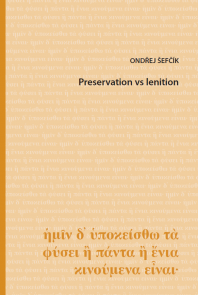Preservation vs lenition
The development of Indo-European two-obstruent clusters
Studien zur historisch-vergleichenden Sprachwissenschaft 21 (SHVS 21)
2024 · Kartoniert · 324 Seiten
ISBN 978-3-935536-77-6
Unlike previous minor studies on the theme, which on account of their partial nature could not fully capture the deeper principles of the development of Proto-Indo-European obstruent + *t/dh/s clusters, the present book provides a structural view of their development in all branches of Indo-European languages both in breadth and depth. Inter alia, Bartholomae’s law, tau celticum and the issues of Lautverschiebung both in Germanic and Armenian are also innovatively treated. The highly structured text makes the volume a unique work of reference. Anyone interested in the Indo-European consonant system and its continuation in the various branches of the Indo-European language family will find the book with its new solutions and new answers to many (old) questions indispensable to their research. Other linguists such as typologists will also profit from its findings and groundbreaking methodology.
Some of the particular findings of the book: (1) There is a very common progressive development of the two-obstruent clusters, which generally follows a trajectory of lenition, with the given outcomes being points on the line of spirantization – sibilantization – debuccalization – ellipsis. (2) It turns out that in different Indo-European branches the inclination to this trajectory (or the ab-sence of it) then remarkably splits the development within the respective branches. Thus, progres-sive Slavic languages differ from regressive Baltic, progressive Iranian from regressive Indian, pro-gressive Sabellian from regressive Latin. (3) The concept of the development of the Tt cluster is conceived differently from the existing con¬cept of affricativization (Tt > tst), assuming that most Indo-European languages are following the spirantization trajectory into *ϑt. Affricativization being a minor variant attested only in two peripheral branches, both variants being probably different stages on the same trajectory.




